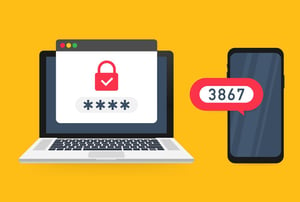 Multifactor authentication uses a combination of two or more methods to authenticate who you are. These methods include something you know, something you have and something you are. To break it down further, the something you know could be a password or security questions, the something you have could be a token or code sent via SMS, and the something you are usually involves biometrics (fingerprint or facial recognition).
Multifactor authentication uses a combination of two or more methods to authenticate who you are. These methods include something you know, something you have and something you are. To break it down further, the something you know could be a password or security questions, the something you have could be a token or code sent via SMS, and the something you are usually involves biometrics (fingerprint or facial recognition).
Many organizations are moving towards using multifactor authentication in their applications. In fact, most banks and government agencies are moving towards requiring multifactor authentication to access your accounts. So why is this shift happening?
Passwords are something that have easily been stolen. A combination of security breaches and people using weak passwords have got us to the point where we need another way to authenticate who we are. It is easy for a cyber criminal to steal a password, but there is a lot more effort involved if they also need to steal your SMS number and fingerprints. While nothing is 100% secure, having multifactor authentication makes it much more difficult for a cyber criminal to gain access to your data.
As to the question if your organization needs multifactor authentication, that is up to you, however with all the breaches that have occurred due to weak or stolen passwords, it is a solid first line of defence. Some cloud services even come with multifactor authentication as part of your service, it may just need to be turned on. There really isn’t a good reason to avoid multifactor authentication. The risk of account takeover is too great.
If you are looking for advice on how to best utilize multifactor authentication, Quick Intelligence can help. Our experts at QuickProtect will help ensure you have the right solution to keep you, your team, and your business secure.
